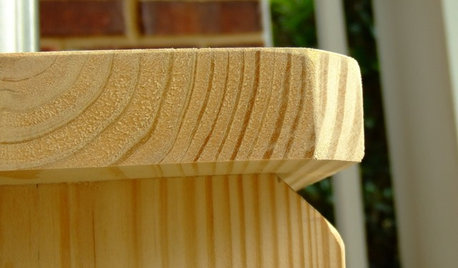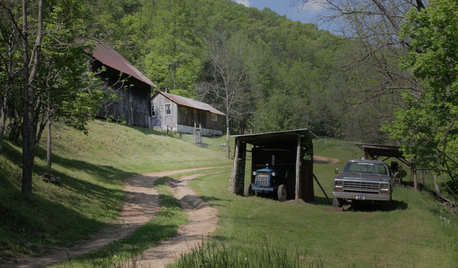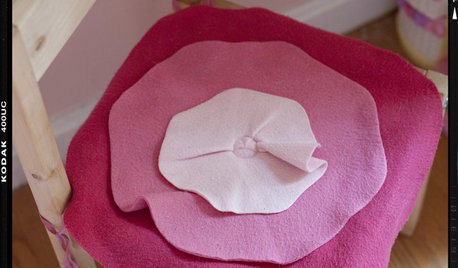Don't give up on that cutting!
Dennis AKA Snaglpus
13 years ago
Related Stories

DIY PROJECTSCutting Corners: Miters Spruce Up Woodworking Projects
These basic woodworking cuts add another dimension to simple corners
Full Story
DECORATING GUIDESBring in da Funk: How Humble Touches Give a Home Soul
Shake up expectations and stir up interest with pieces that show patina, create contrast or offer a jolt of surprise
Full Story
LIFEYou Said It: ‘Give the Kitchen a Little Wake-Up Call’ and More
Design advice, inspiration and observations that struck a chord this week
Full Story
GARDENING GUIDESGive Your Turf the Fall Tune-up It Deserves
Treat your battered lawn to a little TLC this fall, and it will reward you with lush, healthy grass come spring
Full Story
TASTEMAKERSNew Series to Give a Glimpse of Life ‘Unplugged’
See what happens when city dwellers relocate to off-the-grid homes in a new show premiering July 29. Tell us: Could you pack up urban life?
Full Story
CHRISTMAS20 DIY Ornaments to Give or Keep
From classic to quirky, easy to more involved, these Christmas ornaments will perk up your tree or make a great gift
Full Story
DECORATING GUIDES10 Ways to Give Your Hospitality a Tropical Touch
Treat guests to the resort treatment with blossoms, fruit and artwork that stir up an air of the exotic
Full Story
CLOSETSGive Footwear Storage the Boots
They stand up to fall chills and mud, but do your boots flop over forlornly in a corner indoors? These storage solutions can help
Full Story
DECORATING GUIDESFelt Gives Rooms the Warm Fuzzies
Snuggle-up softness paired with workhorse sturdiness? It's no wonder felt has moved past crafts and onto interior design's radar
Full Story
ARCHITECTURERenowned Architects Give Artworks a Minimalist New Home
A New York museum takes up residence in a newly built minimalist structure, and its architectural features offer lessons for homeowners
Full StorySponsored
Columbus Area's Luxury Design Build Firm | 17x Best of Houzz Winner!
More Discussions






Suzi AKA DesertDance So CA Zone 9b
wabikeguy
Related Professionals
Simpsonville Landscape Architects & Landscape Designers · 70037 Landscape Architects & Landscape Designers · Aloha Landscape Contractors · Overland Park Landscape Contractors · Plymouth Landscape Contractors · Red Oak Landscape Contractors · South Lyon Landscape Contractors · Foothill Farms Decks, Patios & Outdoor Enclosures · Layton Decks, Patios & Outdoor Enclosures · Windsor Decks, Patios & Outdoor Enclosures · Falls Church Fence Contractors · Palmetto Fence Contractors · Statesville Fence Contractors · Wilmette Fence Contractors · San Lorenzo Fence Contractorsgiants_2007
Suzi AKA DesertDance So CA Zone 9b
wabikeguy
eukofios
satellitehead
cath41
satellitehead
tapla (mid-Michigan, USDA z5b-6a)
danab_z9_la
Suzi AKA DesertDance So CA Zone 9b
gorgi
gorgi
tapla (mid-Michigan, USDA z5b-6a)
wabikeguy
tapla (mid-Michigan, USDA z5b-6a)
wabikeguy
danab_z9_la
giants_2007
danab_z9_la
Dennis AKA SnaglpusOriginal Author
giants_2007
giants_2007
mrhappy
Dennis AKA SnaglpusOriginal Author
palmer
giants_2007
mrhappy
Dennis AKA SnaglpusOriginal Author
giants_2007